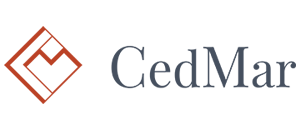The Economist said it first: “A good CFO at this time can save a company; a bad one will bury it.” Small medium firms have leverage over larger companies in the current economic crises – they are agile, adaptable and can pivot easier. While more vulnerable to shifts and shocks and business continuity being a huge issue for companies of all sizes at the moment –
To ensure your firm has the best probability of surviving the crises, there are certain changes CFO’s can make to make organization more adaptable to change; contain costs and maintain a tight hold on cash & liquidity.
Communication is Your Strategic Asset Right Now – The best investment right maybe maintaining communication and building trust with your key stakeholders right now. Its okay to be vulnerable and uncertain but have a plan to communicate regularly and convey the information your customers, suppliers, shareholders want from you.
Create Real-Time Information Transparency – A live digital document can create transparency and be a tool to maintain your customer relationships, manage employee productivity and retain your visibility. It also conveys company policy, is important for brand building at the moment and can limit anxiety and “noise” from external sources.
Digitize Existing Processes – Many companies had to digitize end to end payments and processes overnight as a result of the crises; make this transition to digital financial and operational processes as much as possible and ensure its robust so you can continue to be responsive
Streamline Decision-Making Process – Not being in the office means coordination is harder; receiving and sharing information may take longer therefore streamline the decision-making process for quick decision making. This may mean creating a core team or delegating the key decisions to one person in a smaller organization.
Push Through Strategic Changes – Pandemics have a habit of shifting society and people’s embedded habits dramatically. COVID-19 has made people more open to strategic shifts right now than at any time in your organization. Push through any changes you were challenged to make; and make changes which could improve your company’s 3,6,9 month viability.
Companies can also look their core business strategically and see if it can be re-applied to another industry which is need of scaling up right now – pharmaceuticals; FMCG’s; cleaning goods companies; logistics. Is there an e-commerce site that can be used for other purposes; partnerships be made with clients; swaps or work that your organization can trade instead of paying; people who can be redirected? Shifts, which can be made? Thinking outside the box has never been more relevant! Review your business assets and see how to reapply them to other industries in the short-term to either save costs or create revenue.


